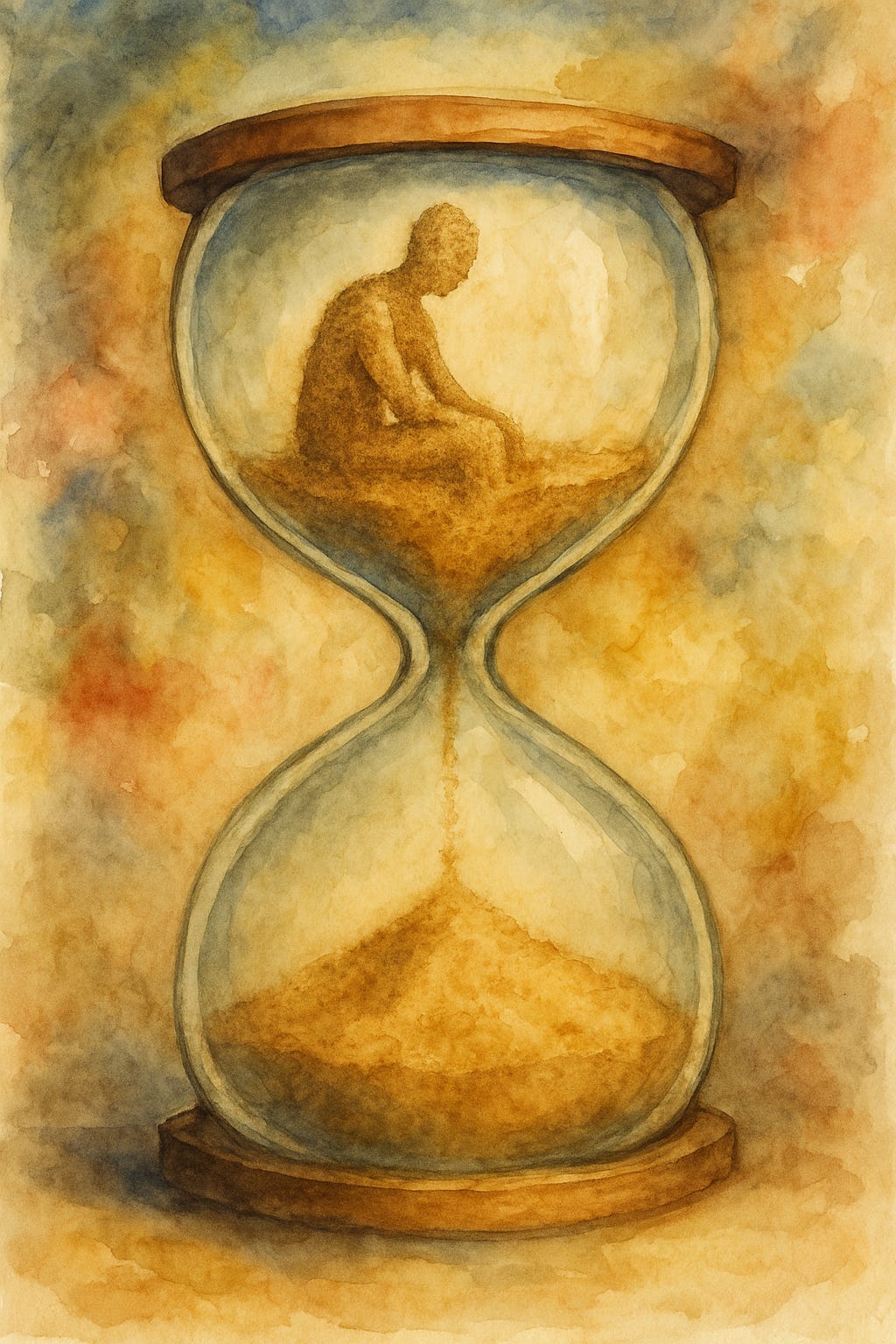Mind Candy is a newsletter on practical philosophy and human flourishment—aka how to live “the good life.” Each month we tackle a new theme.
This month we’re exploring the theme of Mortality.
You can catch up on last week’s articles below:
“Remembering that I'll be dead soon is the most important tool I've ever encountered to help me make the big choices in life. Because almost everything—all external expectations, all pride, all fear of embarrassment or failure—these things just fall away in the face of death, leaving only what is truly important.”
Steve Jobs
Each of us has a finite amount of time. At each stage of life, someone controls our time other than ourselves—our parents, our schools, our jobs.
But with the proper reframe, we not only take control of our time back, we create a sense of freedom in the process.
Once we’ve embarked in our careers, it is a time when we begin to look around and say to ourselves, “is this what the rest of my life is going to look like?” We in essence begin thinking more about our time and mortality.
We essentially begin to face a collapse of comfort and structure. After schooling we’re tossed into the world and must rebuild our schedules and focus. We take jobs to pay bills but in the process risk losing our purpose and the direction we once set for ourselves.
“If one does not know to which port one is sailing,” Seneca wrote, “no wind is favorable.”
In the process of being tossed into the flow of adulthood, many of us lose the direction, purpose, and meaning of our lives. In turn, we end up in what Robert Greene refers to as “Dead Time.”
Dead Time is literally time that is dead to us. It’s wasting time. Being resentful toward the work we’re doing, dragging our feet, going through the motions.
All of us inevitably face this time. We’re forced to do things we don’t want to. Sometimes it is in our jobs, other times it is not such as sitting on hold with customer service, waiting in line, sitting at jury duty.
Alive Time, on the other hand, is time we are engaged and fulfilled in what we’re doing.
To be able to convert Dead Time to Alive Time is to readjust the time we would typically feel like we’re wasting and instead, use it as time to be working on what we want. When we do, we’re engaged, progressing, feeling connected to what we’re doing and what we’re trying to achieve.
In essence, it’s about bringing control back.
“You came into this life with the only real possessions that ever matter— your body, the time that you have to live, your energy, the thoughts and ideas unique to you, and your autonomy,” Greene writes in The 50th Law.
The problem is, we spend most of our lives trying to reclaim our time and looking for future things rather than engaging in the present. We look toward the weekend or holidays off from work, vacations and retirement—all things ahead of us.
Our goal in life then is this: reclaim our freedom by converting Dead Time to Alive Time.
This is why having Personal Projects, as Brian Little would call them, is so important. Personal Projects are meaningful life goals we have and work towards—writing a novel, climbing Mt. Whitney, starting a business.
By having Personal Projects that we’re always working towards, when we encounter Dead Time, we can try to convert it to Alive Time by slotting in aspects of our Personal Projects, thus reclaiming our freedom and time.
For example, when Ryan Holiday was working one of his first jobs in Hollywood, he mostly sat around all day. Rather than just waste time, he started reading books and making notecards, converting what would have been wasted time back to his time.
Likewise, whenever I am on the move, I always have several things with me: notes to index from my reading, a book, and a podcast. Then whenever I hit Dead Time such as sitting in a waiting room, standing in line, or driving, I’m converting the Dead Time back to Alive Time as I have multiple Personal Projects I work on.
It’s easy in today’s age to allow Dead Time to persist. We have smartphones that have everything we want—texts with friends, social media, the news. It is endless what it can provide and converting Dead Time to Alive Time requires diligence and preparation.
“True ownership” Greene writes, “can come only from within.”
By following this method of converting Dead Time to Alive Time, we not only re-engage with life, we readjust the direction we’re going in, not simply be tossed around by the flow of life. And more importantly, we take back our time.
The sands of time are constantly falling, whether we choose to acknowledge them or not. The key to living a good life is becoming aware as they slip away, and properly resourcing the ones we have remaining. While we can’t outrun or defeat our mortality, we can shape the lives we wish to live and thus, enjoy our existence.
Before you go…
If you enjoyed the above article, you may also be interested in this one:
Thank you for reading Mind Candy. If you enjoyed this work, please consider upgrading to a paid subscription. Or if now isn’t the right time, please share to someone who could benefit.
Until next time,
D.A. DiGerolamo
We are a participant in the Amazon Services LLC Associates Program, an affiliate advertising program designed to provide a means for sites to earn advertising fees by advertising and linking to Amazon.com.









